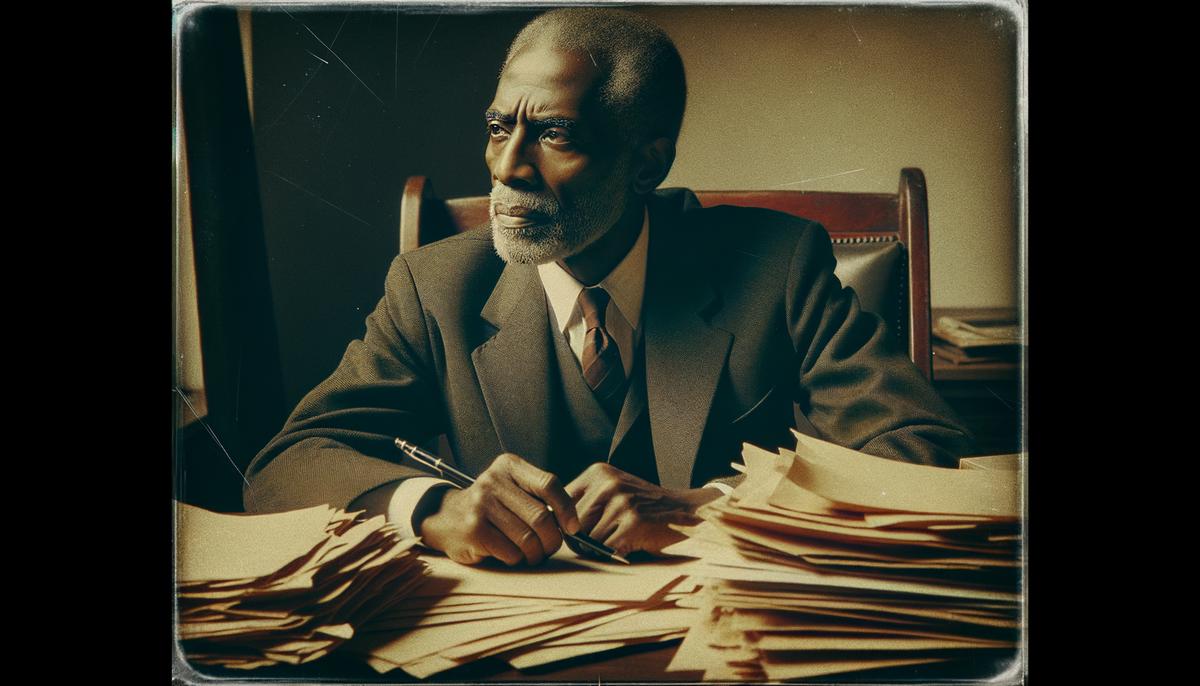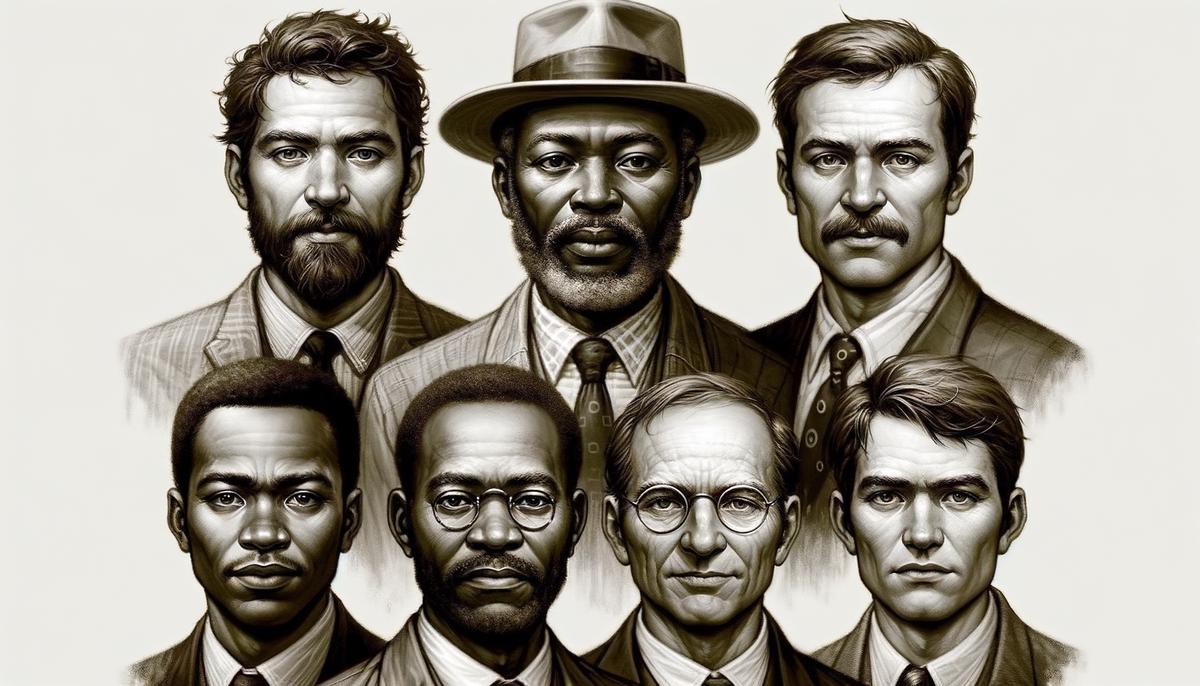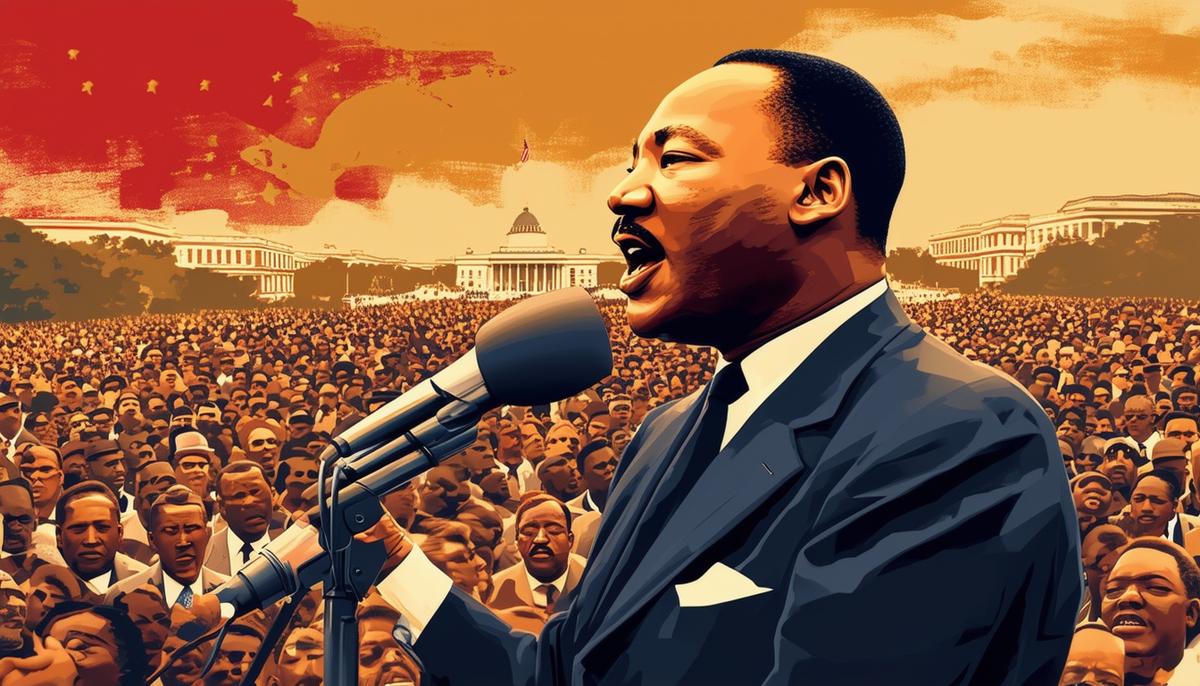Origins and Planning
A. Philip Randolph set the stage for the 1963 March on Washington long before it happened. During World War II, he planned a march to highlight discrimination against Black soldiers and workers in defense jobs. This led President Roosevelt to issue an executive order creating the Fair Employment Practice Committee.
In the 1950s, Martin Luther King Jr. rallied thousands for a 1957 event celebrating a Supreme Court victory. Randolph's strategy and King's leadership combined to push for racial justice. Bayard Rustin joined as the master planner.
The 1963 struggle in Birmingham, Alabama reignited the push for change. Randolph and Rustin focused on jobs and freedom for their biggest event yet. After some hesitation, President Kennedy gave his support. The Big Six leaders – including Randolph and King – moved forward with planning. Rustin handled the logistics, right down to the portable toilets.
This gathering aimed to bring jobs and civil rights issues into the spotlight, setting the stage for speeches and change.

Key Figures and Organizations
The "Big Six" civil rights leaders led the charge in Washington:
- Martin Luther King Jr. (SCLC)
- Roy Wilkins (NAACP)
- John Lewis (SNCC)
- Whitney Young (National Urban League)
- James Farmer (Congress of Racial Equality)
- A. Philip Randolph
Behind the scenes, Bayard Rustin worked his magic on logistics. Women like Dorothy Height, Anna Arnold Hedgeman, and Gloria Richardson played crucial roles, even if they weren't in the spotlight.
Organizations like the NAACP, SCLC, and SNCC brought their own flavors to the mix. The NAACP lent its prestige, SCLC inspired with nonviolent resistance, and SNCC brought youthful energy.
Labor groups, religious congregations, and cultural icons like Mahalia Jackson also pitched in. This diverse crowd – young and old, Black and white, secular and religious – came together to demand justice and inspire future generations.

The Day of the March
On August 28, 1963, about 250,000 people gathered at the National Mall. The air buzzed with excitement as folks from all over came together for change.
A. Philip Randolph kicked things off, setting the tone for a day of powerful speeches and performances. John Lewis fired up the crowd, while Joan Baez, Bob Dylan, and Mahalia Jackson provided the tunes.
But Martin Luther King Jr. stole the show with his "I Have a Dream" speech. Encouraged by Mahalia Jackson, King painted a picture of a better America that had everyone grooving. His words about justice and unity hit home, leaving a lasting impact on the crowd and the nation.
"I have a dream that one day this nation will rise up and live out the true meaning of its creed: 'We hold these truths to be self-evident, that all men are created equal.'"
The day wrapped up with a feeling of hope and togetherness. It wasn't just a moment – it was the start of a movement that would keep on rocking for years to come.

Impact and Legacy
The March on Washington left its mark on America's social and political scene. It pushed Congress to act, helping to pass the Civil Rights Act of 1964 and the Voting Rights Act of 1965. The march showed the government that people were ready for change.
Public opinion started to shift as more folks saw the civil rights struggle on TV. The march inspired more activism around the country, leading to more protests and sit-ins. Its influence even spread to other countries fighting for justice.
The event also planted seeds for gender equality, even if women weren't always in the spotlight. It showed that when people come together, they can make real change happen.
The March on Washington wasn't just a one-day event – it was the start of something bigger. It turned "impossible" into "inevitable," setting the stage for ongoing fights for justice and equality.
The March on Washington showed the power of unity and hope. It inspired generations to keep pushing for justice and equality, proving that when people join forces, they can create lasting change.
- Rustin B. Strategies for Freedom: The Changing Patterns of Black Protest. New York, NY: Columbia University Press; 1976.
- Branch T. Parting the Waters: America in the King Years, 1954-63. New York, NY: Simon and Schuster; 1988.
- Carson C. In Struggle: SNCC and the Black Awakening of the 1960s. Cambridge, MA: Harvard University Press; 1981.
